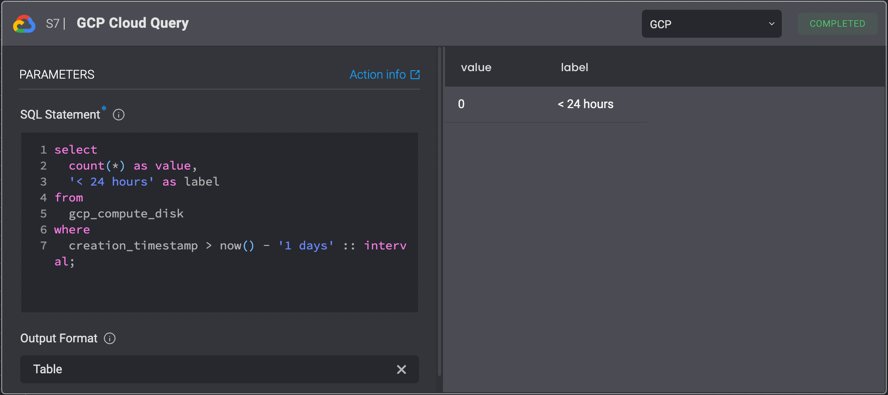Background
The Run GCP Cloud Query Action performs Steampipe queries on GCP resources with a powerful and simple PostgreSQL syntax.
For example, a complicated action such as listing disks that are not in use in GCP can be done simply:
select name, id, usersfrom gcp_compute_diskwhere users is null;
select name, id, zone_name, disk_encryption_key_typefrom gcp_compute_diskwhere disk_encryption_key_type = 'Google managed';
select name, retention_policy ->> 'retentionPeriod' as retention_periodfrom gcp_storage_bucketwhere retention_policy ->> 'retentionPeriod' < 604800 :: text;
Blink supports this Steampipe version: v0.32.0.
Action Parameters
| Parameter | Description |
|---|
| SQL statement | The SQL query to execute against database resources. Use standard SQL syntax. |
| Output format | The representation of the output result. The possible options are “Table”, “CSV” or “JSON”. |

